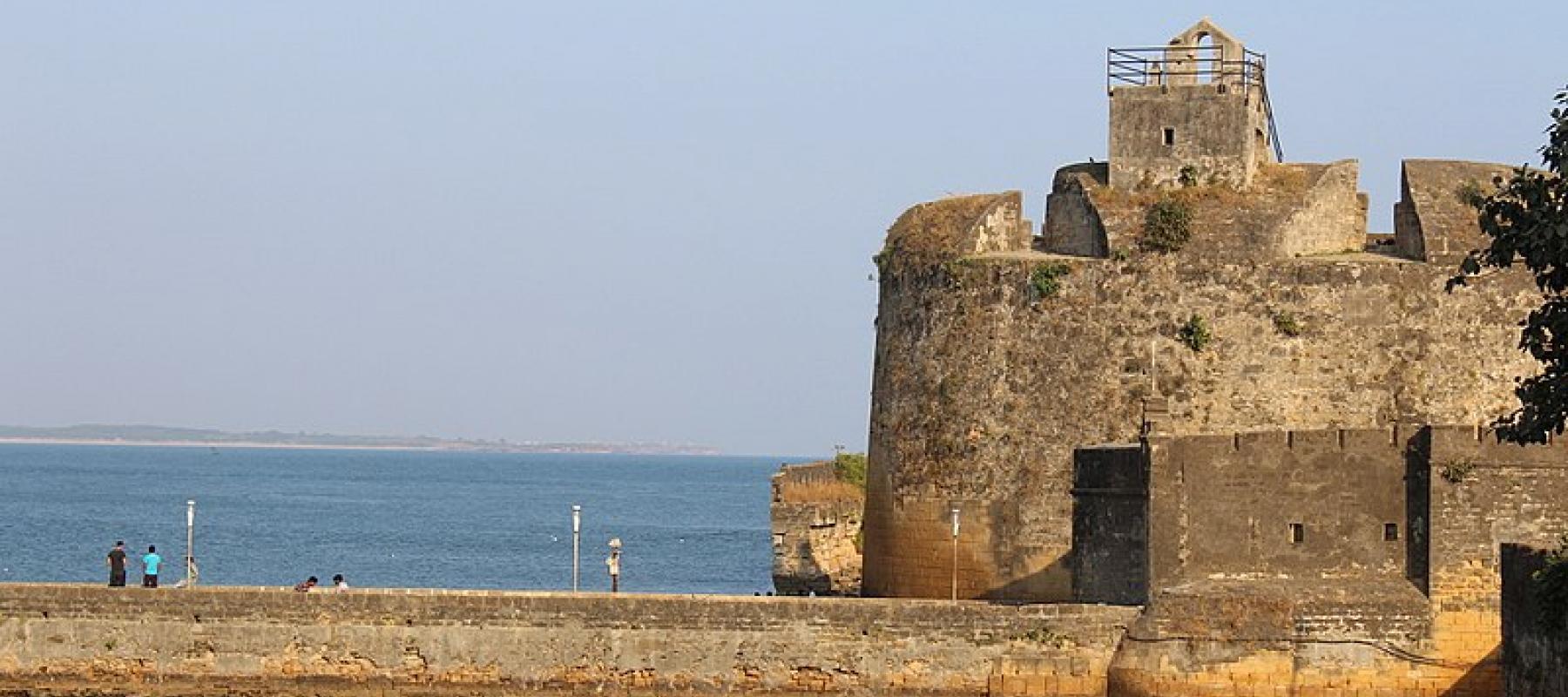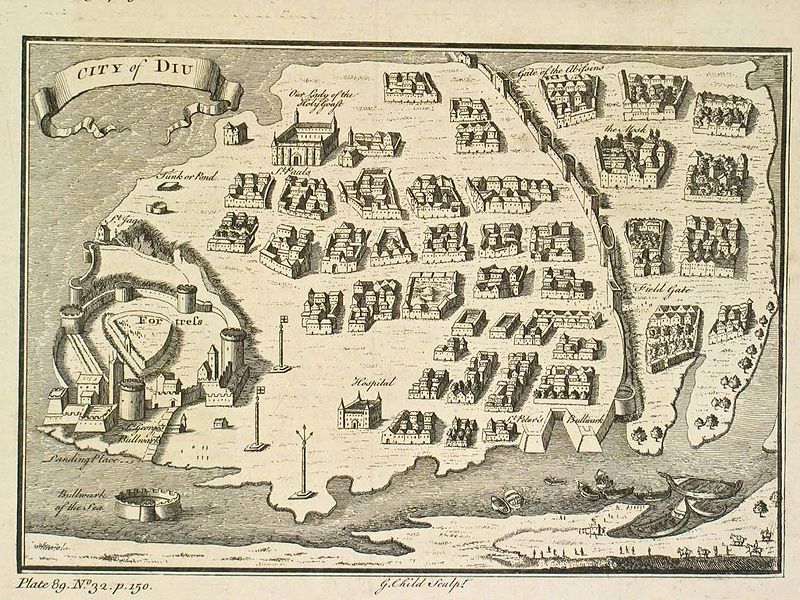
Diu, unlike many former Portuguese colonies in India, still cherishes many historical edifices, landmarks and houses of the Portuguese culture. For almost 400 years, the Portuguese were the colonial power in Diu, which is a historic island outpost. Of many architectural marvels built by the European power, Diu fort is one of their grandest and earliest possessions in India. Diu was ruled by and linked with various dynasties throughout the ancient period namely Mauryans, Kshatrapas, Guptas, Maitrakas, Chavadas, and Chalukyas. During the medieval period, Diu came under the Islamic rule, when, in 1297, Alauddin Khilji defeated the Rajputs and made Diu his territory. It stayed with the Islamic rulers for more than one and a half century, until the Portuguese conquered it after they emerged victorious in the Battle of Diu. It is noteworthy that the influence of Portuguese on Diu was immense.
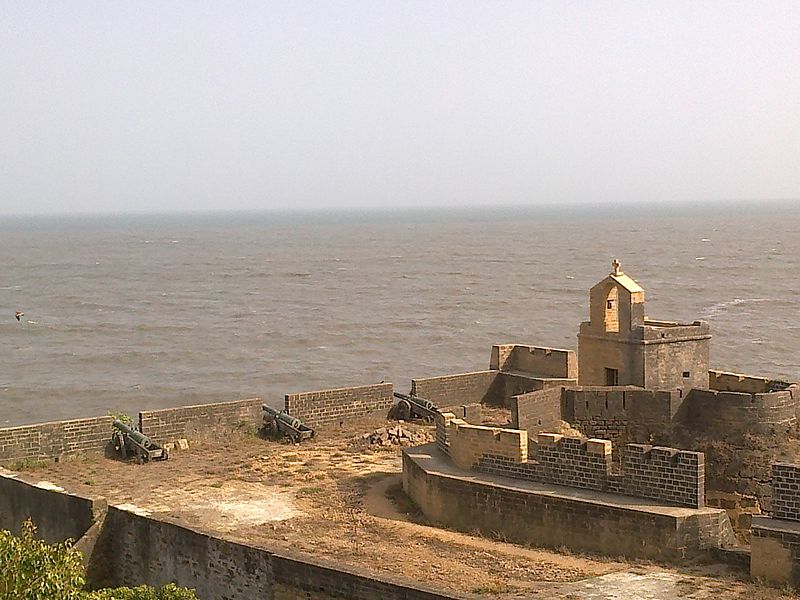
This Portuguese-built fortress was constructed with the aim of defence at the Eastern tip and to strengthen the flourishing spice trade, in the 16th century. In 1501, the governor of Portuguese in India, Nuno da Cunha was ordered by the Portuguese Government to build a fort in Diu, for which he launched a military attack on Diu and tried to annex it multiple times from the Islamic rulers, but failed. Finally, the Sultan Bahadur Shah of Gujarat in 1535 AD himself sought help from Portuguese against the attacks of Mughal Emperor Humayun, later, for which, the Sultan of Gujarat and the Portuguese entered in a defence alliance. Taking full advantage of the situation, they signed the defence Treaty of Bassein, with the Sultan, under which they got permission to build a fort in Diu and to place a garrison in it. Over the years until 1546, the fort underwent modifications, further strengthened, demolished the existing fortification and made it into a formidable fortress (between 1535 and 1546). In 1538, Turks gathered a huge naval force and laid a great siege on the fort by repeatedly bombarding and attacking it. Their massive force included 20,000 men and 66 ships. When they were about to win and on the verge of surrender by the Portuguese, they lifted up the siege for some reason still not known to historians and experts. Followed by that, the Portuguese finally occupied the fort and the city. Even though the Sultan of Gujarat and various other rulers of Gujarat tried to take control of it, they were never successful. The territory remained under the control of Portuguese from 1537 to December 1961 (424 years), until its Indian Invasion when the government of India launched a military action called the ‘Operation Vijay’, ending Portuguese colonial rule in Goa, Daman and Diu. The fort is now under the administration of Indian government.
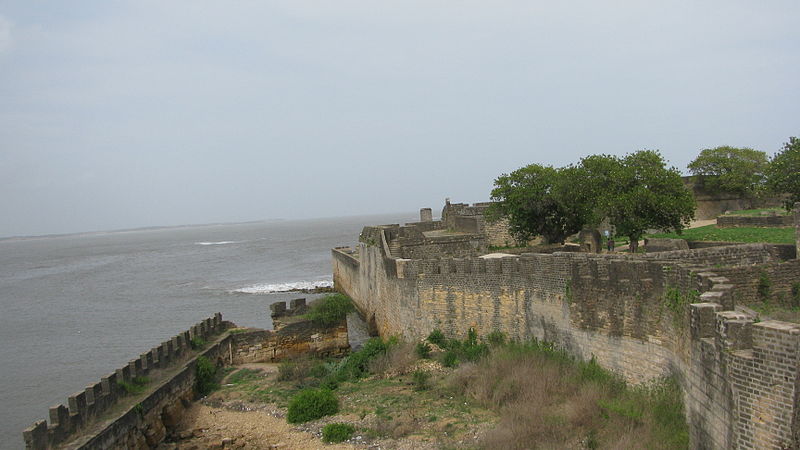
Built by Portuguese in 1535, the Fort of Diu was formally known as Fortaleza de São Tomé and they called it ‘Praça de Diu’ (majestic Diu Fort) in Portuguese. Later, D Joao de Castro rebuilt this fort in 1546. With a commanding view and surrounded by water from three sides overlooking the sea, a jetty was constructed on the north-western coast, which is still in use. The fort carried out trade with Cambay, Broach and Surat in Gujarat. One can see cannonballs and iron shells scattered all over the parapet of the fort. Once highly guarded by cannons on all sides, some are still placed inside the fort. The highest point of the Island is the lighthouse.
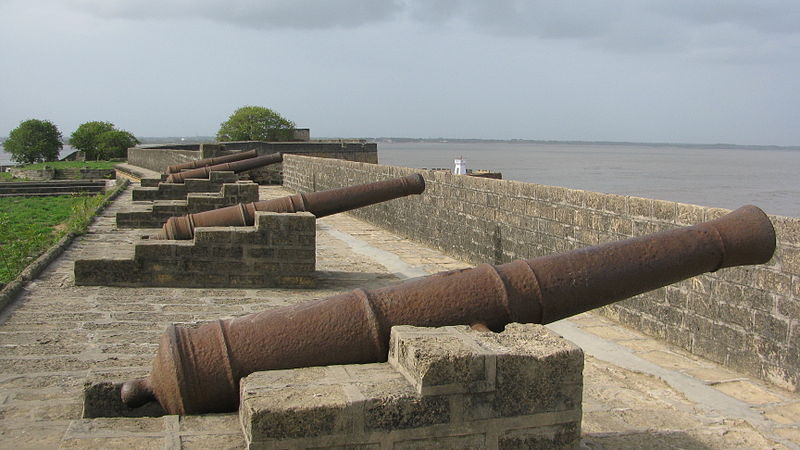
There are ruins of the fort walls, gateways, arches, ramps, bastions in the fort area all once built and used for the military defences. Spread over an area of 5.6 hectares, this expansive and imposing fort is divided into three sections, which includes the outer wall along the coastline, the inner wall used for mounting the guns and the double moat between the two walls, to protect the fort. These walls have bastions named after the Christian Saints namely the bastion of São Tomé (St. Thomas), later renamed as bastion Cavaleiro, while oldest of them is believed to be of St. George. The strong and mighty wall of the double moat is built of sandstone, which was successful in keeping the enemy at bay. There are three gates to the fortress, of which the main entry gate has five large windows with stone galleries on the main front wall. The bridge leading to the main entryway has Portuguese inscriptions engraved on it. The fort had several underground escape tunnels inside the fort.
This grand fort once housed residences for the nobles, a warehouse, and barracks for the soldiers, house of arms and ammunition, prison, churches and a chapel, unfortunately all of which are in ruins.
Religious landmarks of the fortress
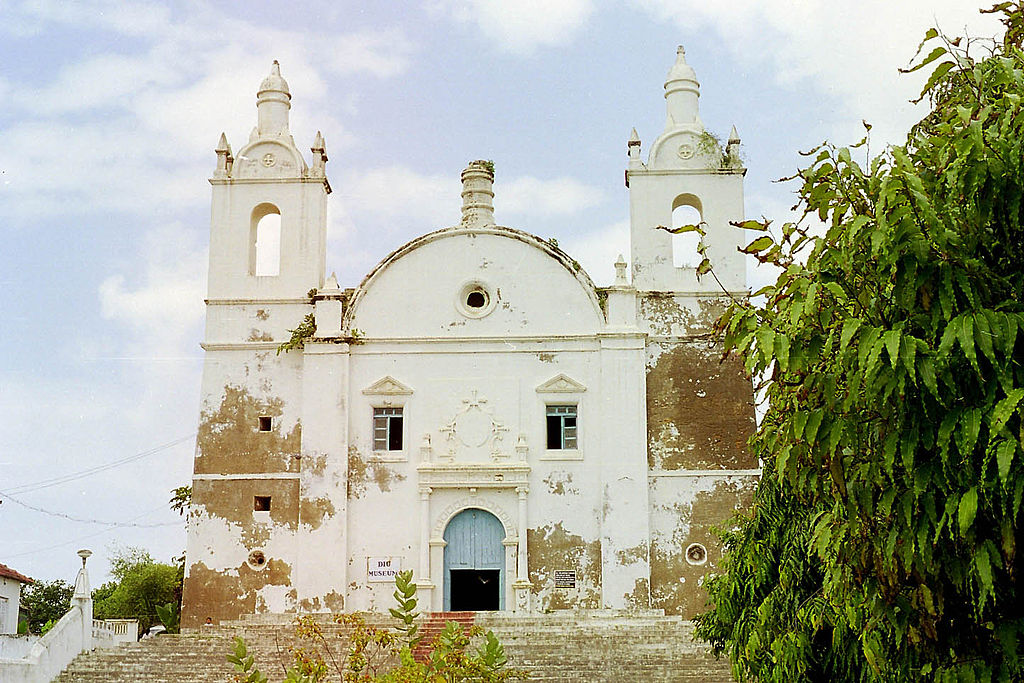
The Church of St. Francis of Assisi, located on a hilltop, has the layout of a European church, which can be accessed by a long flight of stairs in the northern and eastern sides. The shrine was built in 1593, and is now used as a hospital.
St. Paul’s Church was built between 1601 to 1610 in a colonial Portuguese Baroque style. It has a huge patio terrace with a Baroque exterior of rich wood panelling. The church went modifications in 1807 and cannot be accessed by the public any longer.
St. Thomas Church was built in Gothic style architecture in 1598, which is now used as a museum. The mass in the church is held only once a year that is on 1st November. The museum collection includes a wide range of local artefacts, stone inscriptions, idols, statues, sculptures, woodcarvings, clocks and so on.
Situated near a cliff near the fort, the Shiva Temple dedicated to Lord Gangeshwar Mahadev is believed to have been constructed by the Pandavas by the believers, and houses five shivalingas of different sizes.
In the proximity of the fort, there are many bungalows built in Venetian Gothic style and wooden or stone havelis, which was once owned by Portuguese and Indian merchants. Opposite to this enormous fort, you can view the Panikota fort, which once served as a jail for the Diu Island.
Banner Image credits- Wikimedia Commons
